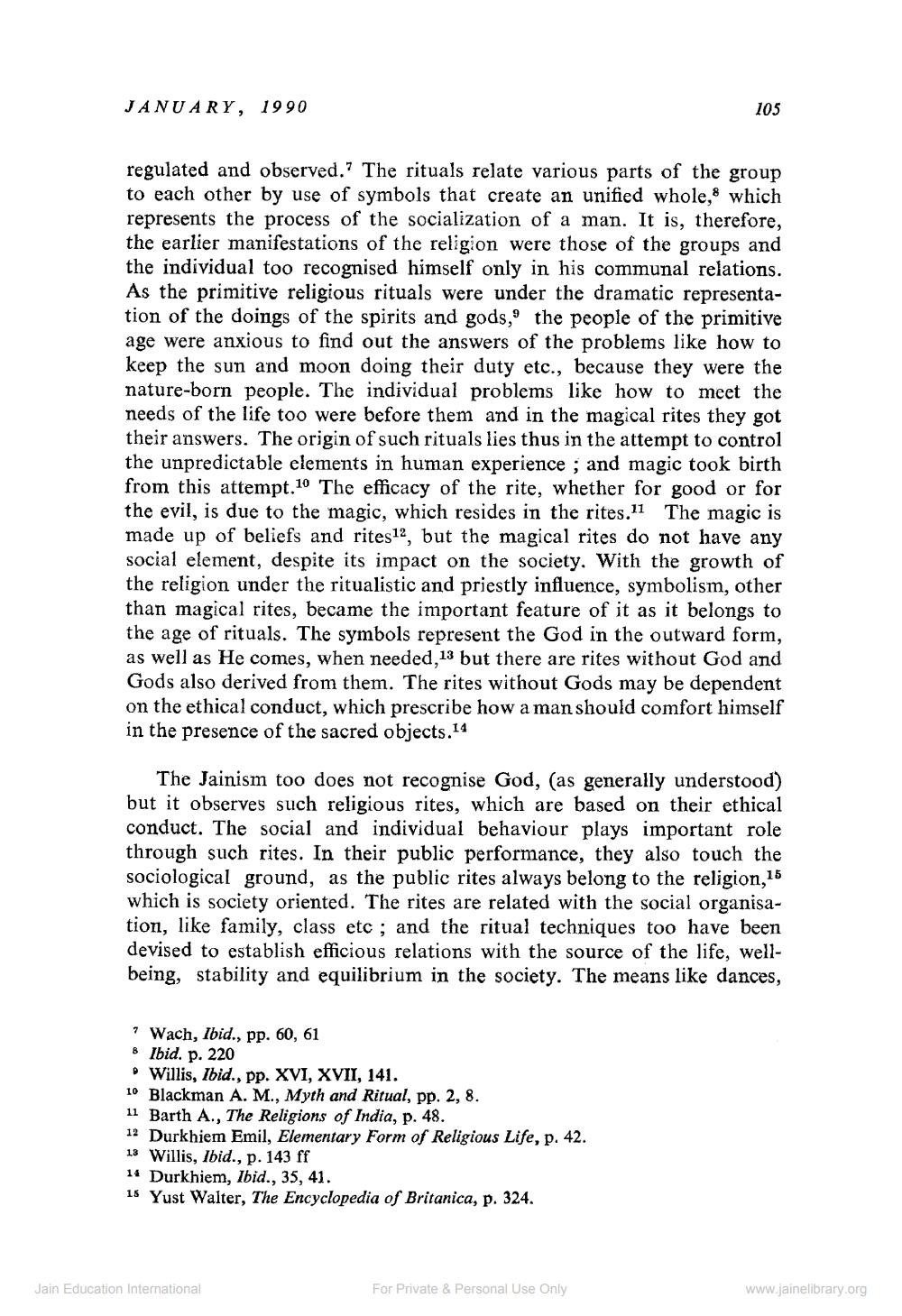________________
JANUARY, 1990
regulated and observed." The rituals relate various parts of the group to each other by use of symbols that create an unified whole, which represents the process of the socialization of a man. It is, therefore, the earlier manifestations of the religion were those of the groups and the individual too recognised himself only in his communal relations. As the primitive religious rituals were under the dramatic representation of the doings of the spirits and gods," the people of the primitive age were anxious to find out the answers of the problems like how to keep the sun and moon doing their duty etc., because they were the nature-born people. The individual problems like how to meet the needs of the life too were before them and in the magical rites they got their answers. The origin of such rituals lies thus in the attempt to control the unpredictable elements in human experience; and magic took birth from this attempt.10 The efficacy of the rite, whether for good or for the evil, is due to the magic, which resides in the rites.11 The magic is made up of beliefs and rites12, but the magical rites do not have any social element, despite its impact on the society. With the growth of the religion under the ritualistic and priestly influence, symbolism, other than magical rites, became the important feature of it as it belongs to the age of rituals. The symbols represent the God in the outward form, as well as He comes, when needed,13 but there are rites without God and Gods also derived from them. The rites without Gods may be dependent on the ethical conduct, which prescribe how a man should comfort himself in the presence of the sacred objects.14
The Jainism too does not recognise God, (as generally understood) but it observes such religious rites, which are based on their ethical conduct. The social and individual behaviour plays important role through such rites. In their public performance, they also touch the sociological ground, as the public rites always belong to the religion,15 which is society oriented. The rites are related with the social organisation, like family, class etc; and the ritual techniques too have been devised to establish efficious relations with the source of the life, wellbeing, stability and equilibrium in the society. The means like dances,
7 Wach, Ibid., pp. 60, 61
8 Ibid. p. 220
Willis, Ibid., pp. XVI, XVII, 141.
10 Blackman A. M., Myth and Ritual, pp. 2, 8.
11 Barth A., The Religions of India, p. 48.
12 Durkhiem Emil, Elementary Form of Religious Life, p. 42.
13 Willis, Ibid., p. 143 ff
14 Durkhiem, Ibid., 35, 41.
15 Yust Walter, The Encyclopedia of Britanica, p. 324.
105
Jain Education International
For Private & Personal Use Only
www.jainelibrary.org




